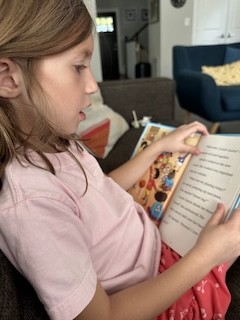Teacher question
At our middle school, two-thirds of our students are not proficient readers (55% of them read below the 30th percentile). Our staff decided that to help address this problem all our students would engage in repeated reading in each core content class once a week. This would be done with grade-level text. Teachers read the passage, students choral read with teacher, and then students read with a partner. That's it. We have been told that this way of repeated reading will help our students improve their phonics and fluency. I'm not in full agreement with this, but we have been told it is a required whole school intervention. Could you shed some light on this for me and the others who think this is not the best bang for our buck? What about explicit phonics instruction?
Shanahan response:
This is really two questions: one about the best way to meet secondary students’ reading needs and one specifically about the value of teaching fluency. I’ll try to answer both.
As for your middle school’s unfortunate reading levels, fluency instruction may be part of the solution, but it will probably be insufficient, especially if implemented in the way that you describe.
That 55% of your students are below the 30th percentile on some reading test, tells me that you have a serious problem, and such problems deserve a serious response from serious people.
But those test data don’t reveal what the problem is.
There are many reasons students in grades 6-8 may not read well. Decoding problems, perhaps. Or difficulties with fluency. Poor vocabulary and weak morphological skills? Maybe the students lack reading stamina, knowledge of written language, or adequate reasoning ability. Maybe, they can read, but don’t want to. And, of course, the problem could be some mix of all those possibilities.
Years ago, I would have said, “avoid phonics instruction.” Studies then had concluded that phonics at those grade levels didn’t pay off.
Then, I was on the National Reading Panel, and we found studies that showed phonics instruction could improve the decoding abilities of older students but without positive impacts on reading comprehension or spelling. I took that to mean that it was reasonable to address the phonics needs of older students in pull out interventions, but that phonics alone would be pointless (these kids would need vocabulary and comprehension – a conclusion consistent, I thought, with the work of Charles Perfetti who claimed that there was more to reading words than decoding). Accordingly, I invited Don Deshler to provide advice in this space about high school phonics instruction, and Marilyn Adams chimed in on the success of her program for doing just that (you can look it up).
More recent studies have reshaped my thinking again. One study has been especially influential in that regard (Wang, Sabatini, O’Reilly, & Weeks, 2019). They administered reading tests to tens of thousands of students in Grades 5-10. Not a nationally representative sample and not a widely used battery of tests either (Reading Inventory and Scholastic Evaluation – RISE). Nevertheless, the findings are provocative.
This study reported that a significant percentage of the middle and high school students had very low levels of decoding ability – 30% of the students in their sample, though it should be remembered that this was an especially low reading population.
The cut point or threshold they used to identify this 30% was interesting. They found that especially low decoding ability didn’t correlate with reading comprehension. When students got above a certain point in decoding, there was a correlation.
They divided their sample of students at that inflection point and that’s where things got interesting.
The students who scored below that point made essentially no learning progress in reading across the school year, no matter the students’ grade level.
The percentage of students in need of explicit decoding instruction in your school may be lower than in that study. Nevertheless, I’d worry a lot about those kids who perform below that decoding threshold. I would be surprised if they got much from the fluency training that you describe.
The original theory of oral reading fluency instruction (which I attribute to Carol Chomsky) was that some students who had adequate knowledge of the orthographic-phonemic system couldn’t implement it during reading. Fluency instruction was for those children who tested high in phonics but low in reading.
The Wang et al. study suggests to me that Chomsky may have been on to something. Students below the decoding threshold would gain little or nothing from fluency work, while those above it could benefit. The National Reading Panel found that fluency practice had a positive impact on reading comprehension, but even a bigger payoff for word reading, including decoding. That is, the kind of fluency practice you describe can improve decoding ability (perhaps because it helps students to develop automaticity with those phonics skills).
The pattern identified in the Wang study seems to fit with a lot of other facts. For instance, it might explain why it has been so difficult to obtain positive results from secondary school reading interventions. Those studies usually lump all kinds of low readers together. The presence of the below threshold readers could exert a misleading drag on the effects of vocabulary, language, or strategy interventions – since the low decoders wouldn’t be able to benefit yet from such teaching.
Also, even if phonics interventions for older students targeted those below-threshold kids specifically, the results would likely be disappointing. Remember, students didn’t benefit from other instruction until they exceeded the threshold. That would mean that reading gains would not be likely until sometime after the intervention was completed, long after typical post-testing in research studies (or intervention programs).
In any event, those results suggest that some of your students will probably require explicit decoding instruction. Further testing would be needed to determine who they were. Fluency practice can have positive impacts on decoding but perhaps mainly for students who are at a high enough level of decoding ability.
Other students might need greater attention to vocabulary, morphology, written language analysis, comprehension strategy work, and/or world/domain knowledge development. Fluency practice won’t help with any of those deficiencies either.
Fluency instruction has been found to improve reading achievement, so providing some fluency support should have some value (though what you describe isn’t encouraging).
Modeling can be helpful (a teacher reading the text prior to the students’ attempt to read it) but reading a whole passage doesn’t provide much memory support. I’d suggest limiting that modeling, making it briefer and more targeted. If the students have trouble with a sentence, read that to them, and then have them give it a try.
Paired reading can be helpful, too, if the other students provide feedback. Teachers need to involve themselves in this process, since not all students are well-equipped for it. I recommend pairing students strategically to make sure that those struggling get the needed support or that no student always gets stuck with the partners who won’t or can’t help.
I would encourage all the teachers to use these practices in class but give them control over when they do this. Perhaps everyone should sign onto a certain number of minutes of fluency each week (and make it enough minutes that the students will get several such experiences weekly).
Finally, motivation is important. Explaining the point of fluency work to the students matters. Tim Rasinski strongly encourages activities like Radio Reading and Readers’ Theatre as engaging versions of fluency. Such motivation can be overdone in my opinion (because it can take too much time), but goosing things up occasionally makes sense.
The simple answer is that fluency practice can be beneficial for your students. It will help those who have fluency problems. But what’s going to be done with the kids with other reading needs?
References
Chomsky, C. (1976). After decoding: What? Language Arts, 53 (3), 288-296, 314.
Wang, Z., Sabatini, J., O’Reilly, T., & Weeks, J. (2019). Decoding and reading comprehension: A test of the decoding threshold hypothesis. Journal of Educational Psychology, 111(3), 387-401.







Comments
See what others have to say about this topic.